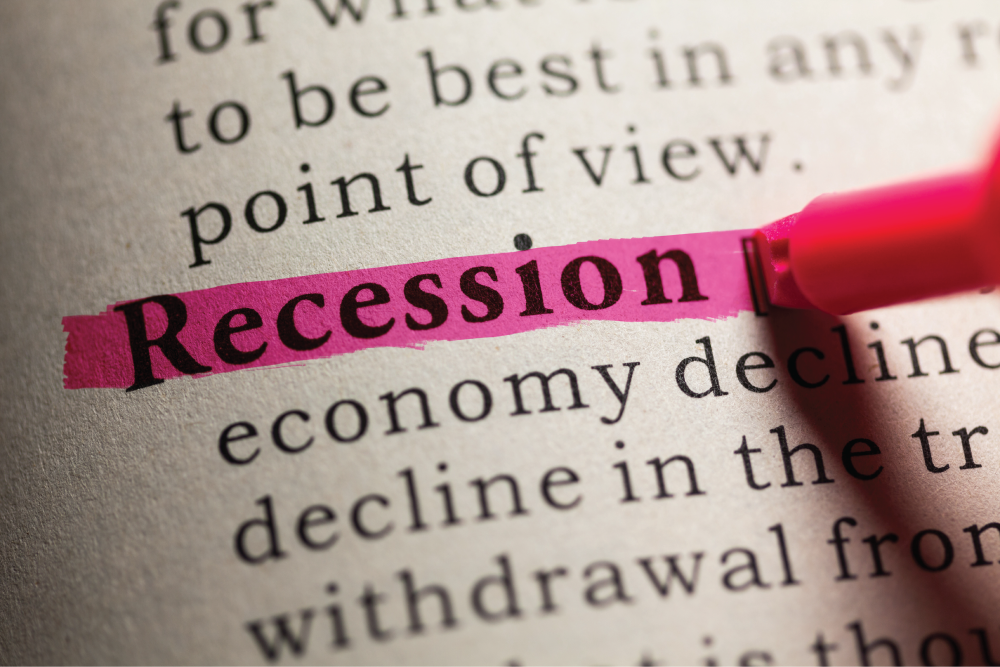There’s a new trend in town taking its place at the intersection of American pop culture and politics.
And it involves an iconic economic event that most of us don’t want to hear or read about – but it’s dominating the current news cycle anyway.
Recession.
Yes, the “R” word.
Here’s What Happened
On Monday, July 25, White House Press Secretary Karine Jean-Pierre told reporters during the daily briefing the standard definition journalists have used for “recession” isn’t the same one that economists use.
At least twice during the briefing, Jean-Pierre stated the White House and the Biden Administration would wait for its cue from the National Bureau of Economic Research before declaring a recession was in effect. She also challenged that the long-held definition of a recession as being two consecutive quarters of economic downturn in GPD (gross domestic product) as not the technical way to define a recession.
The next day, Brian Deese, current director of the National Economic Council and lead economic policy advisor in the Biden Administration, made a guest appearance during the daily White House press briefing. He said growing rates of consumer spending, job creation and the rate of business and consumer investment are “in contrast to what we see typically during recession.”
He also quoted a statement by Treasury Secretary Janet Yellen made on July 24 during her appearance on NBC’s “Meet the Pres” that two consecutive quarters negative does not a recession make.
What Yellen actually said after touting a laundry list of economic factors headed in the right direction is that “a recession is broad-based weakness in the economy. We’re not seeing that now.”
And then the Wednesday, July 27, news cycle hit with numerous reports that back in 2008 when Deese worked in the Obama Administration he wrote a blog describing recession as “two consecutive quarters.”
Enter the Political Games
Of course, this revelation created a stir inside and outside of the Washington, D.C. beltway as media outlets across the country relayed the latest development in the “recession definition debate.”
Following suit with most American political drama, the debate is spit with left vs right. The left agrees with the Biden Administration’s use of the NREB definition, and the right favors the “two quarters definition.”
Definitions Please
According to the Webster’s dictionary since 1913, economic recession is defined as the following: “A period during which economic activity, as measured by gross domestic product, declines for at least two quarters in a row in a specific country.”
Investopedia.com utilizes the “two-month” measurement to define the dreaded recession. Pretty much everyone does in colloquial uses of language.
However, the NBER broadens the scope under which a recession is identified as “significant decline in economic activity that is spread across the economy and that lasts more than a few months,” according to an article on its website titled, “Business Cycle Dating Committee Announcement January 7, 2008.”
Chances are that unless you are a major economic geek, you haven’t heard of the Business Cycle Dating Committee. It is a working group within NBER maintaining a chronology of economic activity in the United States. It documents the expansion and recession of the U.S. economy.
In the above-referenced article, great detail is given as to how the committee determines what qualifies as an expansion or recession. The basics of this decision-making pivot on these factors: Real GDP (gross domestic product), personal income minus payments, the employment rate, industrial production and the volume of manufacturing sales and wholesale retail as adjusted for price changes. Please note, even that sentence is a very, very basic explanation.
The bottom line: NBER, which is not a government agency but rather a private non-profit research group based in Cambridge, Massachusetts, utilizes a much more complex definition of recession than does the general public. Job creation is a major contributor to that more complex definition of recession.
And in the area of job creation, the American economy is making progress – at least according to the stats.
Jobs, Jobs and More Jobs
For several months, the U.S. economy has been adding jobs. Well, more precisely, “payrolls.” The federal Bureau of Labor Statistics reported 372,000 nonfarm payrolls were added in June – economists had predicted 268,000; May’s added payroll increase was 384,000.
At the height of the pandemic in 2020, the national unemployment rate was 8.05 percent, according to MacroTrends.net. It dropped to 5.46 percent in 2021. For April, May, and June of 2022, the unemployment rate was 3.6 percent, which according to TradingEconomics.com, was very close to analysis’s expectations.
The addition of jobs (payrolls) and the reduction of the unemployment rate doesn’t jive with recession – at least not on paper or in government accounting.
How it looks and feels on Main Street America most likely is described via a colorful adjective rather than charts and graphs.
So, just to be fair to the government powers-that-be, we will conclude with one final comment from the White House.
Jean-Pierre said the strength of the labor market (added payroll, declining unemployment) is, “not what we generally see as we talk about recession or even pre-recession.”
Perhaps Americans will decide for themselves based on their own personal and business finances whether the nation is in, or is headed to a recession.
Thoughts?
We’d enjoy hearing from you. Email us at This email address is being protected from spambots. You need JavaScript enabled to view it..






